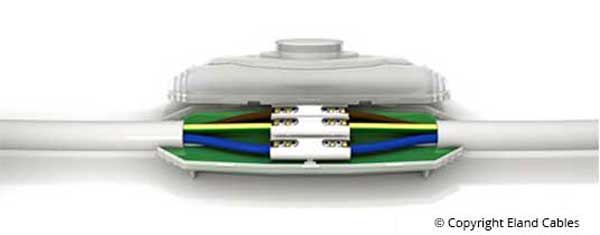How are cables jointed?
Cable joints are used to connect low voltage, medium voltage and high voltage cables. There are several different types of joints and the right joint will depend on the size, shape and configuration of the cable, the voltage rating, the structure, the insulation type, the particular application, and the number of cores to be jointed.
The joint should provide electrical insulation and mechanical protection, it may also need to provide a barrier to water ingress.
The conductors may be joined by either welding, crimping, soldering or using mechanical connectors. The jointing insulation and shroud applied over the conductors must be compatible with the cable materials and may include heat or cold shrinkable insulations, moulded types or special tapes.

The structure of the jointing will depend upon whether the intention is for a simple straight-through connection between two cables or if there is a requirement to have branch of connections to other cables. Cable Joints are available as part of our range of cable accessories - speak to our sales team for more information.
People also ask
Cable Lay refers to the lay length or length of twist or to the method and type of lay of electric cores or cables, sometimes known as cabling...
Earthing is a safety measure to prevent electric shock, whereas bonding is a term used for connecting together all the metallic parts that are not supposed to be carrying electric current ...
Cable Portfolio
View our comprehensive range of power, data, control and instrumentation cables and accessories
Go